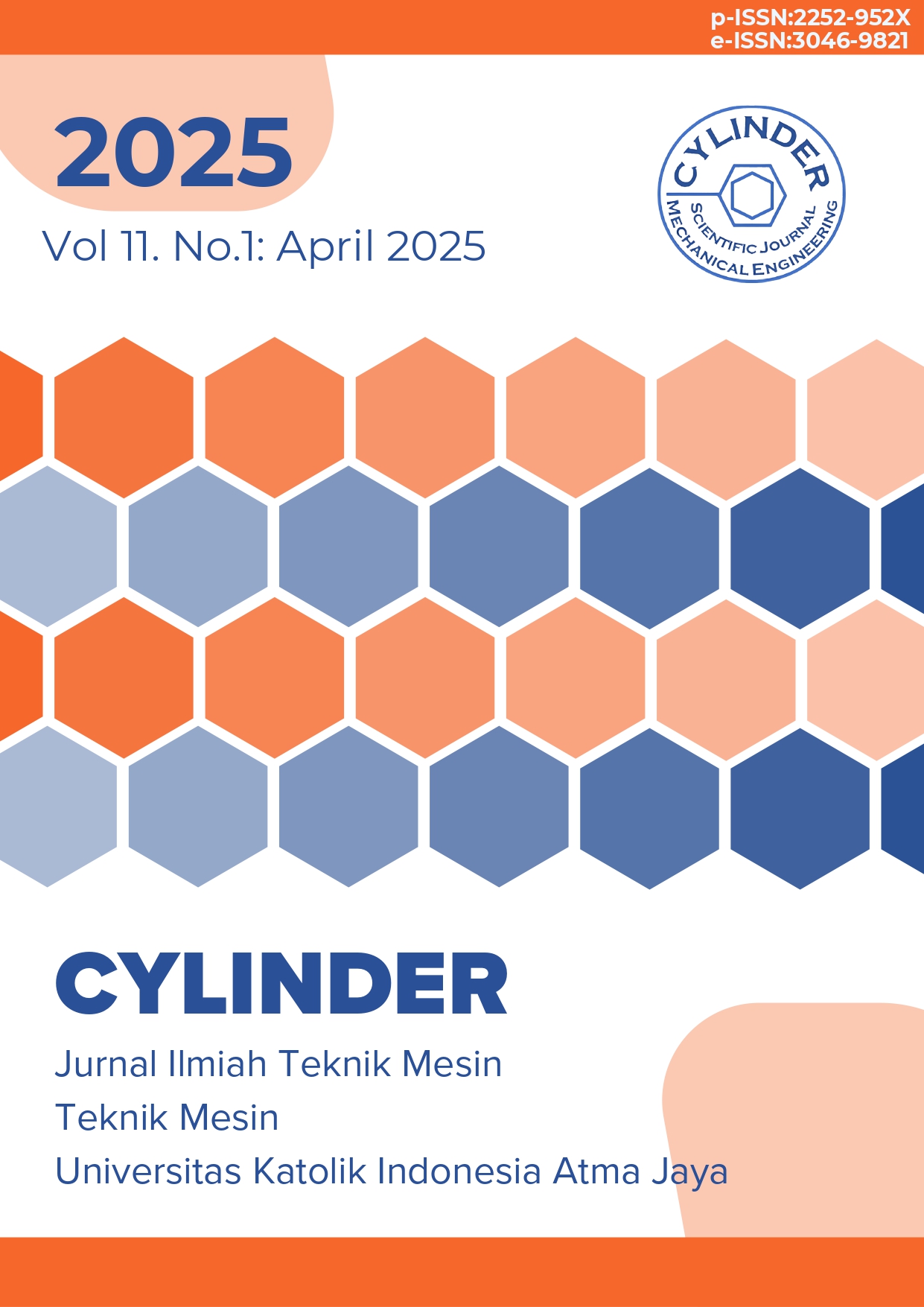The Adoption of Artificial Intelligence (AI) in the Maritime Industry: Opportunities, Challenges, and Its Implications for Operational Efficiency
DOI:
https://doi.org/10.25170/cylinder.v11i1.6654Keywords:
Artificial Intelligence, Operational Efficiency, Maritime Industry, Navigation, Digital TransformationAbstract
This paper discusses the adoption of Artificial Intelligence (AI) in Indonesia's maritime industry, focusing on port operational efficiency. Using literature review and case analysis approaches, the study identifies port business processes, key stakeholders, and digital systems such as INAPORTNET, CEISA, TOS, VMS, Auto Gate, and STID. The readiness of AI adoption at Tanjung Priok Port is assessed based on indicators including technological infrastructure, operational automation, system integration, human resource competence, operational efficiency, and environmental impact. Findings indicate that while digitalization initiatives are ongoing, AI implementation remains at an early stage. Opportunities lie in productivity, safety, and sustainability improvements, while key challenges include digital infrastructure limitations, system integration issues, regulatory gaps, and human resource constraints. The paper concludes that a phased and collaborative strategy among the government, port operators, and industry players is essential to accelerate AI-driven digital transformation in the maritime sector.
References
DAFTAR PUSTAKA
[1] World Economic Forum, Digital transformation initiative: Unlocking $1.5 trillion for the maritime industry, 2017. [Online]. Available: https://reports.weforum.org/digital-transformation/maritime/
[2] S. Safuan, A. Syafira, “Artificial Intelligence in Indonesian Ports: Opportunities and Challenges,” Transactions on Maritime Science, vol. 13, no. 2, pp. 1–12, 2024. doi: 10.7225/toms.v13.n02.w0
[3] BeritaTrans, “Digitalisasi Tanjung Priok, Pengawasan Kapal & Barang Gunakan SIVERA dan SITAMPAN,” BeritaTrans.com, 2022.
[4] Pelindo, Laporan Tahunan Pelindo 2023, PT Pelabuhan Indonesia (Persero), 2023.
[5] Freightsight, “Tanjung Priok Terminal Booking System Trials 2023,” Freightsight.com, 2023.
[6] Maritime Club Indonesia, “Container Port Performance Index 2024,” Maritime Insights, 2024.
[7] Z. Zhang, Y. Wang, dan L. Chen, “Recent Advances in Artificial Intelligence Sensors,” Advanced Sensor Research, vol. 2, no. 1, pp. 1–15, 2023. [Online]. Tersedia: https://onlinelibrary.wiley.com/doi/full/10.1002/adsr.202200072
[8] S. Liu, M. Zhao, dan H. Li, “Integration of Artificial Intelligence (AI) with Sensor Networks,” Journal of King Saud University – Computer and Information Sciences, vol. 35, no. 4, pp. 567–576, 2023. [Online]. Available: https://www.sciencedirect.com/science/article/pii/S1319157823004469
[9] J. Lee dan J. Hu, “Smart Port Operations and AI-Driven Automation,” International Journal of Maritime Engineering and Technology, vol. 10, no. 3, pp. 35–48, 2022.
[10] T. Notteboom, T. Pallis, dan J.-P. Rodrigue, Port Economics, Management and Policy, 2021. [Online]. Available: https://porteconomicsmanagement.org/
[11] D. Gavalas, M. Kasapakis, dan N. Pantelidis, “Smartening up Ports Digitalization with Artificial Intelligence (AI): A Study of Artificial Intelligence Business Drivers of Smart Port Digitalization,” Journal of Shipping and Trade, vol. 7, no. 1, pp. 1–15, 2022. [Online]. Available: https://jshippingandtrade.springeropen.com/articles/10.1186/s41072-022-00106-9
[12] UNCTAD, Review of Maritime Transport 2022, 2022. [Online]. Available: https://unctad.org/system/files/official-document/rmt2022_en.pdf
[13] A. Smith, B. Johnson, dan C. Lee, “Transforming the Shipping Industry: Integrating AI-Powered Virtual Port Operators for End-To-End Optimization,” Journal of Advanced Research in Engineering and Technology, vol. 12, no. 3, pp. 45–60, 2024. [Online]. Available: https://www.researchgate.net/publication/382146367
[14] DNV, Green and Smart Ports, 2023. [Online]. Available: https://www.dnv.com/power-renewables/themes/green-ports/
[15] Y. Chen, L. Zhang, dan X. Wang, “Prediction of Harbour Vessel Emissions Based on Machine Learning,” Transportation Research Part D: Transport and Environment, vol. 117, 2024. [Online]. Available: https://www.sciencedirect.com/science/article/pii/S1361920924001718
[16] International Maritime Organization (IMO), “IMO’s Work to Cut GHG Emissions from Ships,” 2023. [Online]. Available: https://www.imo.org/en/MediaCentre/HotTopics/Pages/Cutting-GHG-emissions.aspx
Downloads
Published
How to Cite
License
Copyright (c) 2025 Marsellinus Bachtiar Wahju

This work is licensed under a Creative Commons Attribution 4.0 International License.

